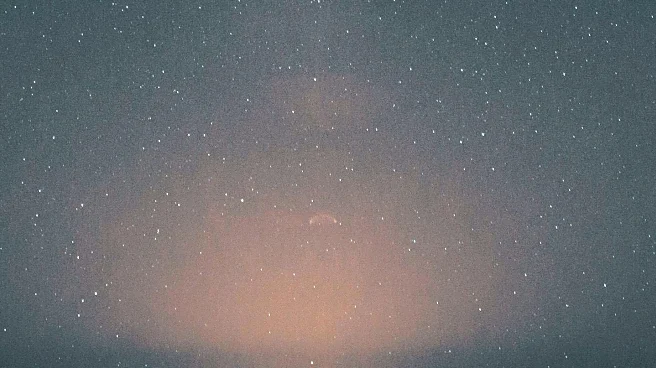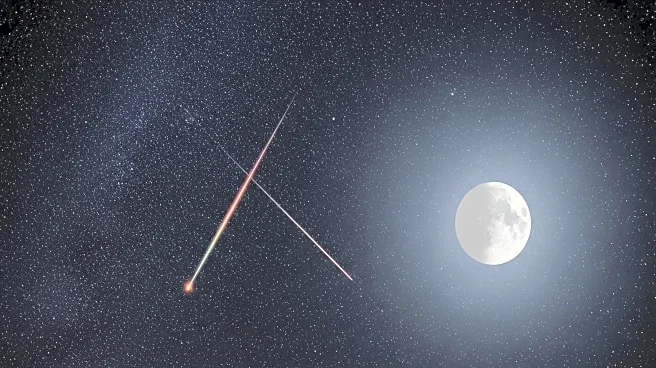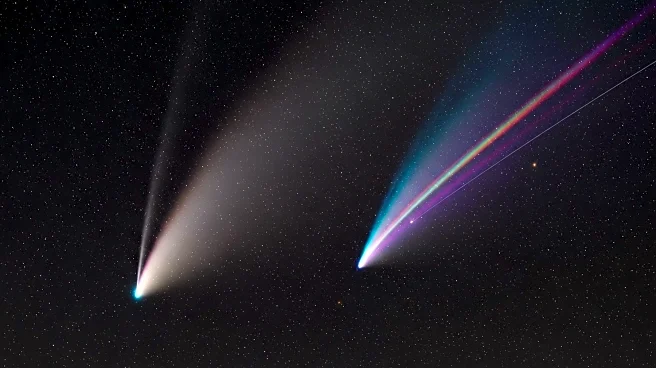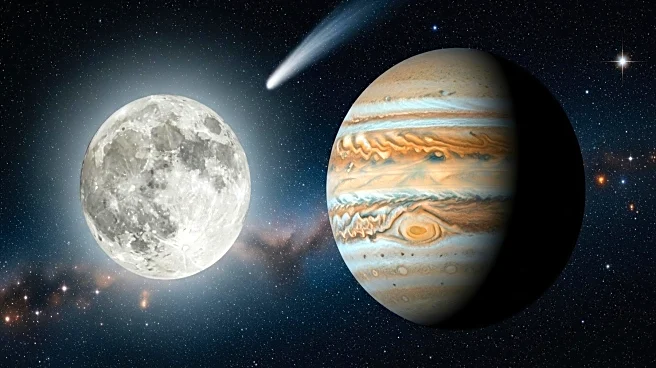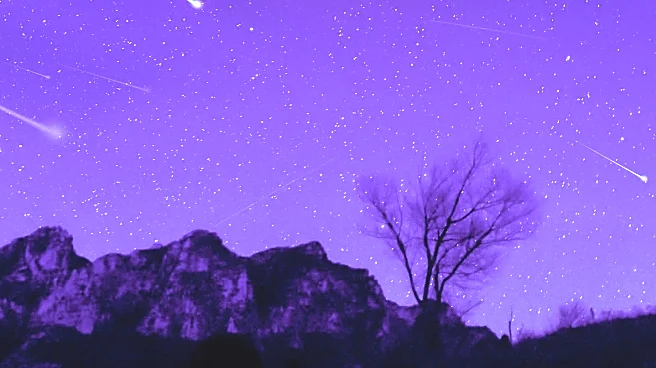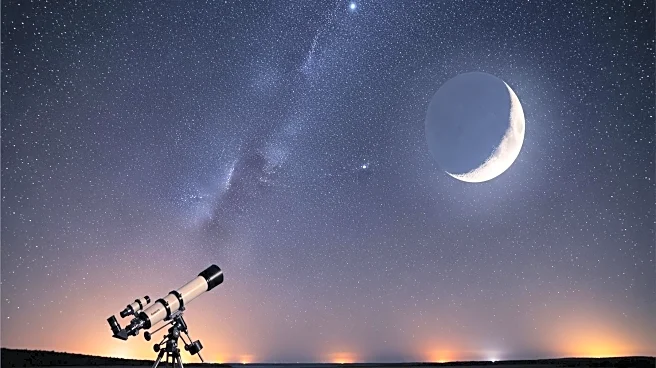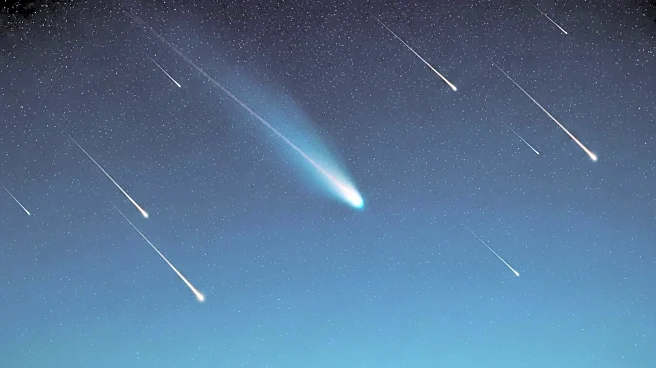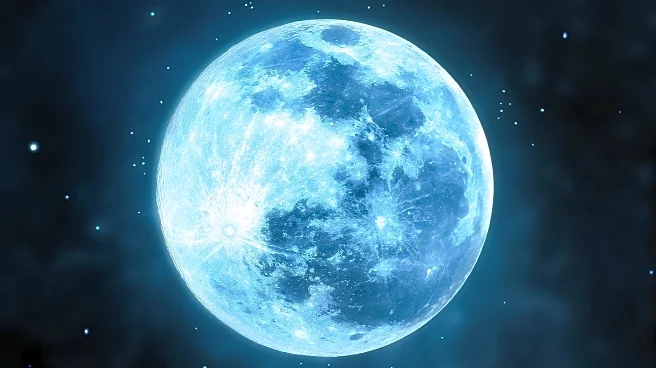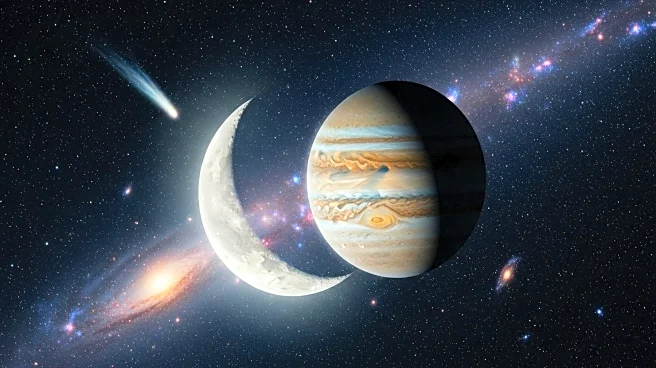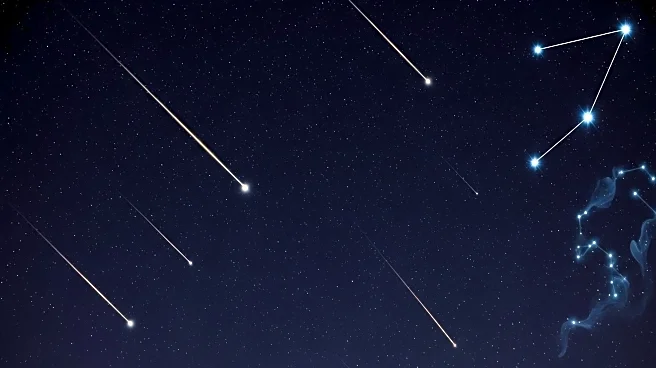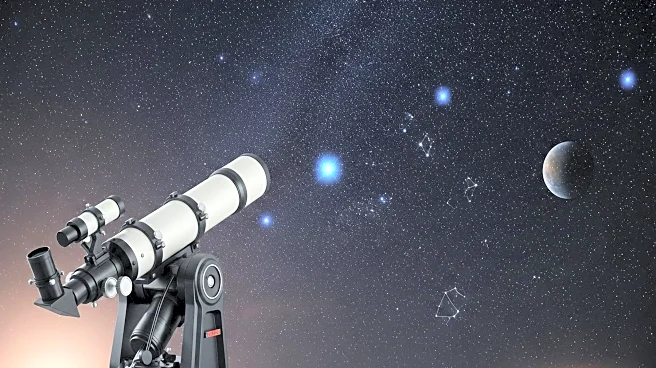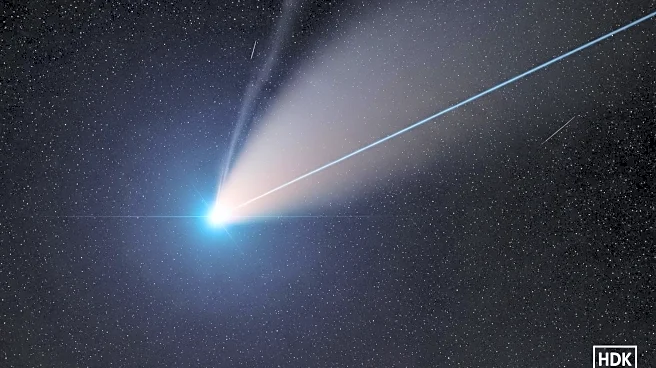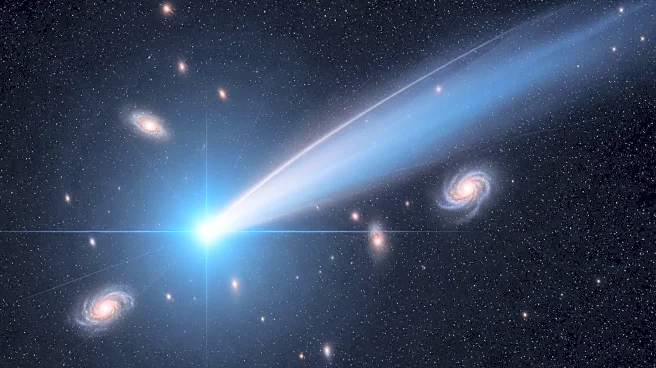What is the story about?
What's Happening?
This October, sky gazers have the opportunity to witness two comets, SWAN and Lemmon, as they traverse the night sky. Discovered earlier this year, these comets will be visible as they approach the sun, causing them to release gas and dust that form their distinctive trails. SWAN is expected to come within 24 million miles of Earth, while Lemmon will be 55 million miles away. Both comets may be visible simultaneously around Halloween, offering a celestial spectacle. Additionally, the Orionid meteor shower will peak overnight on October 20th to 21st, providing another opportunity for stargazers to enjoy the night sky.
Why It's Important?
The appearance of comets SWAN and Lemmon, along with the Orionid meteor shower, offers a unique opportunity for the public to engage with astronomy and appreciate the natural wonders of the universe. Such events can inspire interest in science and space exploration, potentially influencing educational pursuits and public support for astronomical research. The visibility of these celestial phenomena can also serve as a reminder of the vastness and beauty of the cosmos, fostering a sense of wonder and curiosity about the universe.
What's Next?
As the comets approach their closest points to Earth, astronomers and enthusiasts will continue to monitor their paths and visibility. Observatories and amateur astronomers may provide updates and guidance on the best viewing times and locations. Public interest in these events could lead to increased participation in astronomy-related activities and discussions, potentially influencing future educational and scientific initiatives.
Beyond the Headlines
The visibility of comets and meteor showers can have cultural and historical significance, as such events have been observed and recorded by civilizations throughout history. They often inspire myths, legends, and artistic expressions, reflecting humanity's longstanding fascination with the night sky. The current events may also prompt discussions on the importance of preserving dark skies and reducing light pollution to ensure future generations can enjoy similar astronomical experiences.
AI Generated Content
Do you find this article useful?
